Australia So Much to See


GTX141236
Litchfield National Park - Lost City and Tolmer Falls
A slow and winding 10.5 kilometre four wheel drive track brought us to the eroded sandstone pillars known as the Lost City. This drive takes around half an hour one way if you donít meet too many oncoming vehicles as this means pulling off the narrow track. We were less than a kilometre away from Blyth Homestead by direct line, and an access track once linking the two features has been
completely closed. However due to the terrain this was not a direct route. We were also less than a kilometre direct line
from Tolmer Falls, but there was no possible short cut due to the terrain.
Ghost Bat (Macroderma gigas): Australiaís only carnivorous bat, the ghost bat is a predator on large frogs, lizards, birds,
small mammals and even other bats. Much of its prey is captured on the ground.
Orange Horse-shoe Bat (Rhinonicteris
ausantius): Beautiful golden fur and complexity of the face are the striking features of this bat species. The diet of
the Orange Horse-shoe bat consists primarily of moths. It also feeds on beetles, shield bugs, parasitic wasps, ants, chafers
and weevils.
Tolmer Falls is a little further south west of the swamp. A wheel chair accessible path goes to a viewing platform overlooking
the deep drop at Tolmer Falls. There was not a lot of water coming over, but it is a steep drop down. Above the falls,
the creek comes through a large natural arch. Rare bats breed in caverns in the cliff face under the falls. To protect
their environment, there is no access below the falls. The more common Bent Wing Bats also inhabit these caves.
Easily accessible and close to the Litchfield Park Road which runs through the park is Tabletop Swamp. It was a surprise to
see this swamp at the top of a plateau. It is a small depression filled with reeds and surrounded by paperbark trees. This
swamp is a haven for birds, and a number of reptiles can be found. Although the swamp has been known to dry up, there was
still water at the time of our visit.
This dry area was a great contrast to the waterfalls, creeks and forests. Some pillars looked like giant Easter Island statues. We spent a while walking around these towing formations and found it well and truly justified the slow drive in.
A 1.5 kilometres continuing walk passes Tolmer Creek at the top of the falls where swimming is not permitted due to safety issues,
with the exception of tour groups with permitted tour operators. This trail continues on through dry woodlands in which the
pale leafed cycad, Cycas Calcicola, was again prevalent.
Looking west from the Tolmer Falls walk across the Reynolds River and onwards toward the sea. The Tabletop Range Plateau comes
to an abrupt end here with these cliffs.
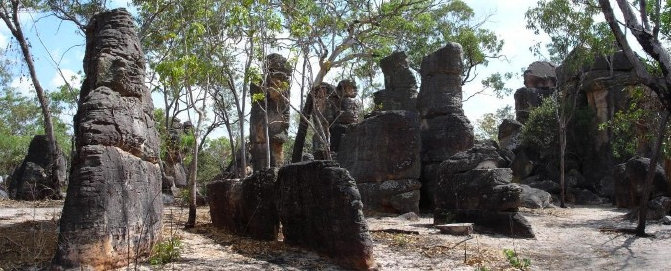
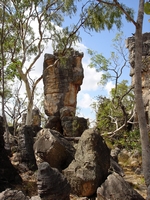
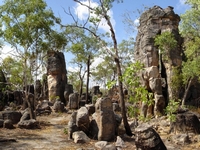
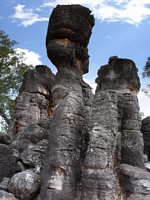
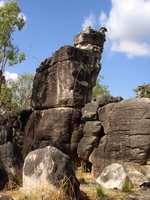
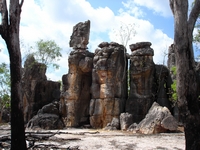
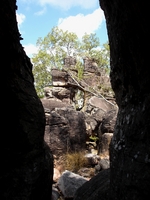
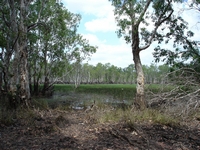
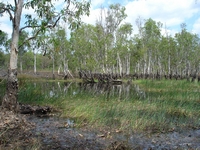
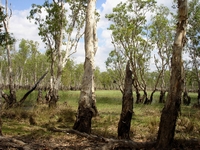
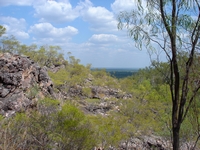
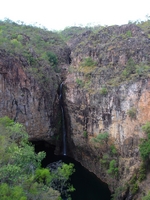
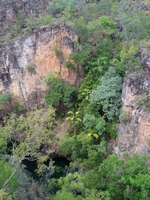
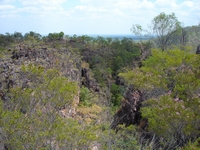
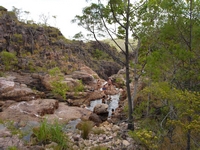
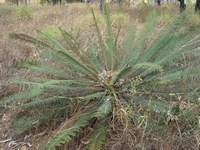
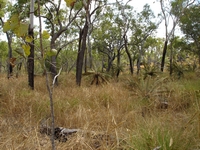
This concluded our three days touring Litchfield National Park. There is plenty to see in places that are easy access
for all vehicles, and it is well worth the trip. Having four wheel is an advantage to see places such as Lost City and areas
in the southern side of the park.
Copyright (C) 2013 AustraliaSoMuchtoSee.com. All rights reserved
Where did we stay?
The private camping area just to the west of the national park, Litchfield Safari Camp, which suited
our needs for basic camping facilities. See our review.
There are also a number of other caravan parks to the east
of the park.
There are several campgrounds within the national park, and these need to be booked and paid for on line.
Not all are suitable for caravans, See details of these on Camping and accommodation in Litchfield National Park.
Park
entry fees now apply at Litchfield National park. These fees and the on line booking system were implemented subsequent to our
visit in 2009.


















